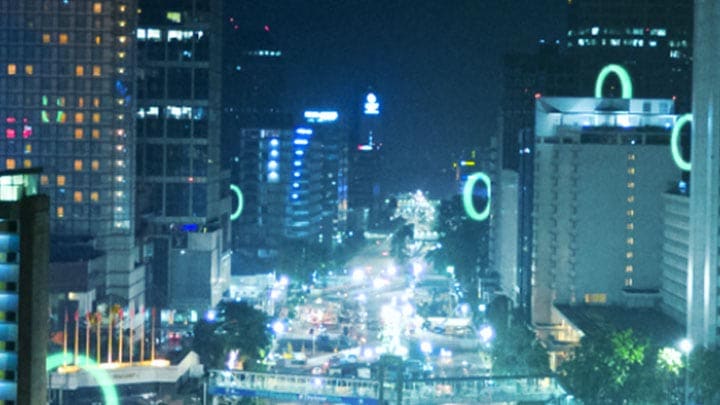April 6, 2021
Known for its extreme weather and breath-taking scenery, how do Nordic countries fare with sustainable design?
And as for design, the region is no stranger to accolades. In 2012, Helsinki was appointed World Design Capital, turning Finland into a hub for design excellence.
It’s a region that’s celebrated for its exemplary sustainability practices, but what are its most inspirational projects to date?
The façade is integrated with 12,000 solar panels, covering a total area of 6,048 sqm. The electricity generated meets nearly half the school’s total energy consumption.
The school is structured into four towers that mirror the students' age and grade levels. In order to boost the amount of natural light, most of the classrooms are nestled into the building’s corners. Installing LED lighting was another way the school slashed its energy consumption; teachers can even adjust the color temperature depending on the time of day, ensuring students benefit from visual comfort at all times.
To top it off, natural materials were chosen for the floors and furniture, while future plans see the school’s toilets being flushed with recirculated water.
It wouldn’t be an article about Nordic design without mentioning the sauna!
Kultuurisauana, Helsinki, opened its doors back in 2013. Designed by Tuomas Toivonen and his wife Nene Tsuboi, it was the first public sauna to be built in 50 years. Producing almost all of the energy it uses, the space has become a feat of eco-engineering.
The clean, minimalist structure features a wood-fired pellet stove to create the perfect ‘löyly’ (the Finnish word for steam). Any leftover sauna heat is used to warm up the water, with the help of a heat pump fitted into the sea. On top of that, solar panels integrated in the southern wall take advantage of sunlight — even the small amounts afforded during the winter months.
Living up to the region’s progressive reputation, the municipality of Copenhagen had ambitious plans to reduce its energy usage.
The ‘low-hanging fruit’ for quick and efficient results, upgrading indoor lighting became a top priority. The aim was to replace all conventional luminaires in publicly owned properties with long-life, high-quality LEDs.
Over 15,000 Philips LED luminaires were installed across the city. The older and less energy-efficient properties were prioritized, including schools, care homes and offices.
As well as reducing energy consumption by up to 70%, residents now have better working conditions, improved visual comfort — and they can even adjust the lighting themselves!
Every Nordic country discussed so far has made strides in sustainability — but what about Sweden?
Stockholm is working towards becoming completely fossil-fuel free by 2040. Although this might seem ambitious, it’s pretty de rigueur. After all, Sweden is a country that decided recycling 84% of its bottles and cans wasn’t enough and is now striving to hit 90%.
What’s more, the northern city of Skellefteå is getting an extraordinary new building: the Sara Cultural Centre. Fashioned entirely from wood, the 80-meter-high structure will be one of the tallest timber buildings in the world. And over in southern Sweden, the city of Malmö offers a new eco-model for urban development, aiming to run on 100% renewable energy by 2030.
Despite differing on culture and language, the Nordics benefit from a joint sustainable sensibility that sets an example not only to the rest of Europe, but to the rest of the world.
Pioneers of Light is a community of the world’s top architects, lighting designers and engineers, united by a passion for realizing their visions through innovative lighting. We guide and inspire the next generation to deliver sustainable lighting solutions that make the world a better and brighter place.
Want to know more about the Pioneers of Light, get in touch!
Banner image: Nordhavn Copenhagen, sustainable neighbourhood in Denmark © jonathanfilskov-photography
Signify (Euronext: LIGHT) is the world leader in lighting for professionals, consumers and the Internet of Things. Our Philips products, Interact systems and data-enabled services, deliver business value and transform life in homes, buildings and public spaces. In 2023, we had sales of EUR 6.7 billion, approximately 32,000 employees and a presence in over 70 countries. We unlock the extraordinary potential of light for brighter lives and a better world. We have been in the Dow Jones Sustainability World Index since our IPO for seven consecutive years and have achieved the EcoVadis Platinum rating for four consecutive years, placing Signify in the top one percent of companies assessed. News from Signify can be found in the Newsroom, on X, LinkedIn and Instagram. Information for investors is located on the Investor Relations page.
